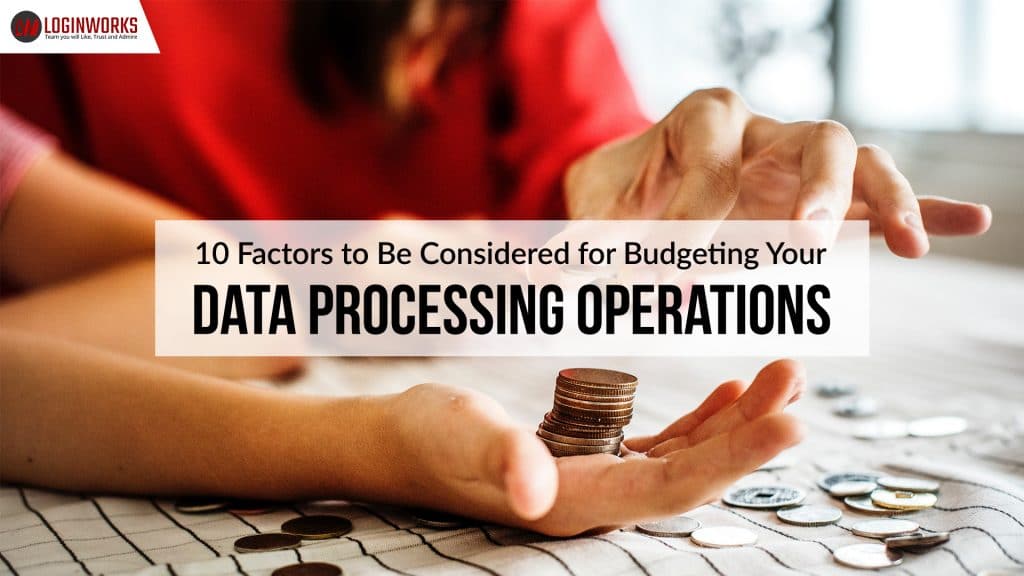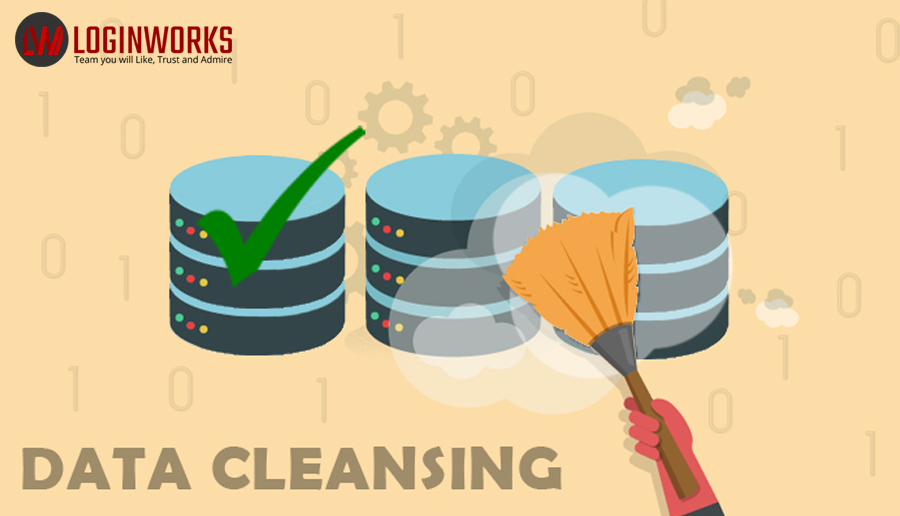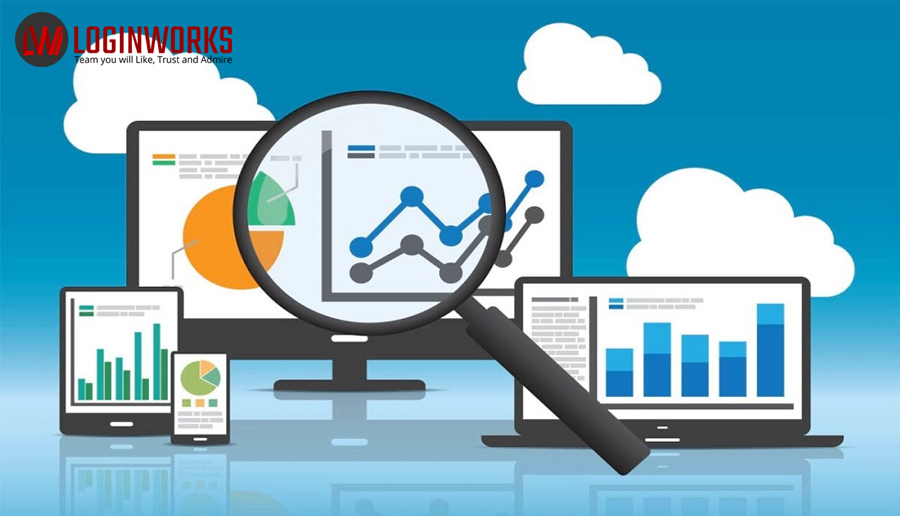INTRODUCTION:
Data processing is a core part of any organization. It makes it easier to comprehend and analyze the collected data and information.
Hence, its importance lies in understanding and resolving problems to deliver more customer-oriented solutions and meaningful outreach of business goals.
However, many businesses often struggle to streamline their data processing operations due to budget constraints.
But here is a little secret; all you have to do is take care of 10 simple, yet often overlooked factors while creating a budget for your data processing operations, and guaranteed success will follow you.
Without further ado, here are the 10 most important things to consider for your data processing budget.
Jump to Section
1. Recognize and identify your business aspirations
It is easy to get carried away and try out just about everything that has worked for others in order to succeed.
However, the truth is if you want to achieve your business goals, then you have to strategize your data processing techniques according to what you wish to achieve for yourself and your customers as the end result.
You need to know how to collect all the required data and then put it to appropriate use.
For instance, the course of action that needed to be taken would be different if you want to find and attract more customers in your target niche than when you want to add more valuable assets to your sales catalog.
You ought to adjust your strategy as per your objective, and the clearer your data processing objective, the better the end results.
2. Cleanse your data records regularly
Data cleanup may look like an unnecessary and tedious task but has its long-term benefits.
Think of it this way, in order to put your money in the right place, you have to have clean and make data more precise.
Any ambiguity or a minor error will eventually lead to a loss of your financial assets.
For instance, suppose you have a list of 5 items you need to invest in, but due to un-updated records, the list shows an itinerary of 6 items; so a chunk of money will go to waste that otherwise could have brought you more meaningful results.
3. Analyze your short term and long term objectives
While setting your budget, you must consider both your short term and long term objectives; that is, you must be aware of what resources you have at hand in terms of manpower, equipment, and infrastructure so that you can deploy your expansion plans accordingly.
To be more precise, start small and identify what your current strategy is bringing in and out in the early stages of deployment.
Recognize whether you need more involvement or a complete change of course, and then add the profits accordingly and/or more resources to gain maturity.
4. Know that recruitment and training is an on-going process
Before making any big investments in the data processing operations, make sure that your staff is ready to deal with the upcoming project.
So instead of blindly jumping into new data processing projects, a small investment in training your current staff or recruiting new employees who have appropriate knowledge can prove to be beneficial and save you loads of money in the long term.
Alternatively, hire a consultant to jump-start the project while concurrently training your staff to take over as you move on.
5. Update your ‘IT’ infrastructure
Your IT infrastructure not only helps streamline a large amount of unstructured data through valuable analytical algorithms but also lowers the burden on your recruited staff and makes the whole process faster.
Having said so, large amounts of data processing- beyond any doubt- requires good IT infrastructure, so it is important that you keep it updated. A failure in one area can cause a delay in the whole process, thus costing you extra bills and extra workload.
Moreover, you need to make regular changes in your IT infrastructure to make sure it complies with your new business plans, monitoring tools, and metrics for data processing within your budget.
6. Do not rely completely on old servers
When you are on a budget, it only seems reasonable to make use of what you already have, right? Well, only partially; especially when it comes to servers.
For instance, your old servers may be doing an exceptional job for your older requirements, say x86 servers for transaction processing, but data processing requires more than that.
You can still choose to use your old servers but then your data processing operations would require more effort from your end.
The old servers are practically good for traditional databases, but cost-effective data processing relies better on specialized avant-garde servers that provide better volume for data storage, analytics, and rapid retrieval.
7. Pay attention to your storage and archiving methods
There is no use in having resources if you cannot tap into them and use them as needed.
So, it is important to pay attention to your storage and archiving methods so that you can find and review the collected data at any time to procure a new analytics approach.
In case your storage and archiving architecture are flawed, you will have to spend more resources to get the exact same data every time, which, needless to say, is a bad budget strategy.
So, divide your data into categories on the basis of importance, and then expunge or store them accordingly in the appropriate storage media.
8. Create an R&D team and conduct experiments
Getting the facts right about your consumers’ needs and behavioral patterns is one of the hardest challenges that organizations have to face, as without need there is no product.
So, make an R&D or data science team to conduct experiments, collect, and then correlate different data to find the right questions that answer your consumers’ needs.
Moreover, you can do this on a tight budget by hiring one or two data scientists with finesse in AI, advanced mathematics, computer programming, data management, and visualization, along with a few tools and software to streamline the process.
And one thing to remember is that the earlier you invest in R&D, the better are your chances for profit in the long run.
9. Evaluate the right key performance indicators
Many organizations make the mistake of using the same KPIs or key performance indicators that they use for other operations like transaction processing.
However, the success of data processing must be evaluated on the number of tasks being processed and completed in the least expensive manner rather than the speed of each task.
Evaluating the right KPIs is of utmost importance since it can help you manage your target and budget more precisely, thus reducing any unnecessary expenditure and improving the base of your future spending plans.
10. Start small first
Just like any other IT project, data processing requires a step-by-step approach.
If you are new to data processing, then dipping your feet all the way in the pool at once is likely to be more risky than rewarding.
So, make sure you understand all the technical as well as manual aspects first so that you can process and analyze the right issues and expectations for the betterment of your business.
Moreover, starting small allows you to make changes easily in case your methods clash with the end-users’ preferences while also saving you the headache of losing big money; thus, opening the window to explore mutually beneficial collaboration techniques and better analytical results within your budget.
Summary
Contrary to the popular belief, you do not have to spend extravagantly to succeed in data processing. The key to working on a budget is to take calculated risks by being aware of every step of your internal operations; because at the end of the day, whatever you do must be in sync with your business goals. Start small, and put some time and effort into research and development. Other than that, evaluate the right KPIs, keep your data clean, your servers and IT infrastructure updated, and your employees well-informed.
However, do write any suggestions or queries in the comment section.
Thank You for reading!!!
- Business Intelligence Vs Data Analytics: What’s the Difference? - December 10, 2020
- Effective Ways Data Analytics Helps Improve Business Growth - July 28, 2020
- How the Automotive Industry is Benefitting From Web Scraping - July 23, 2020




